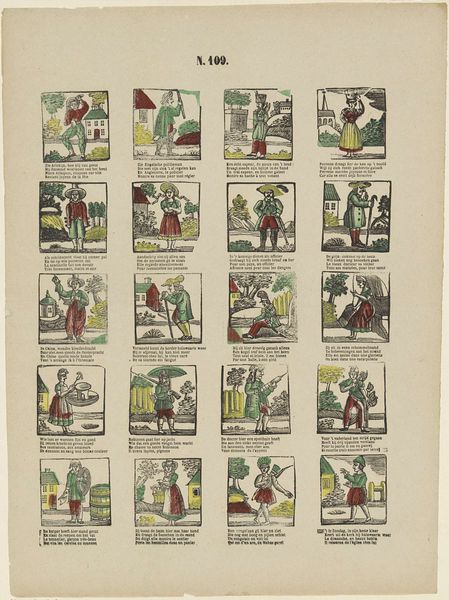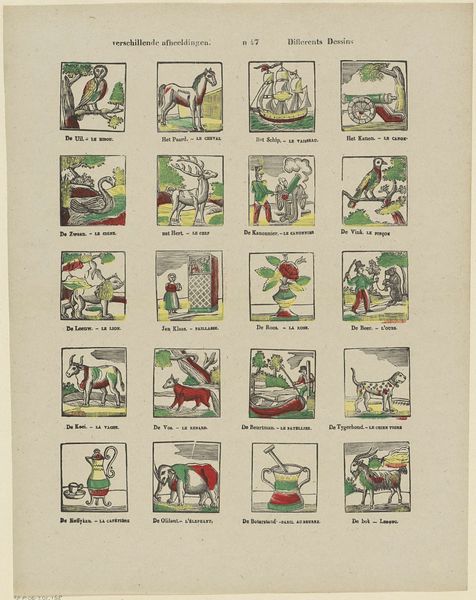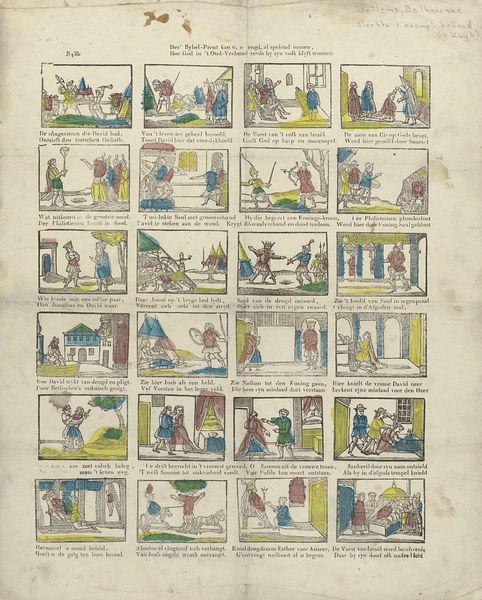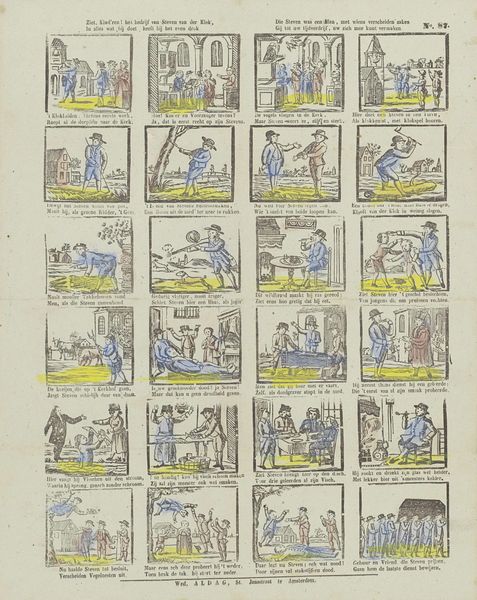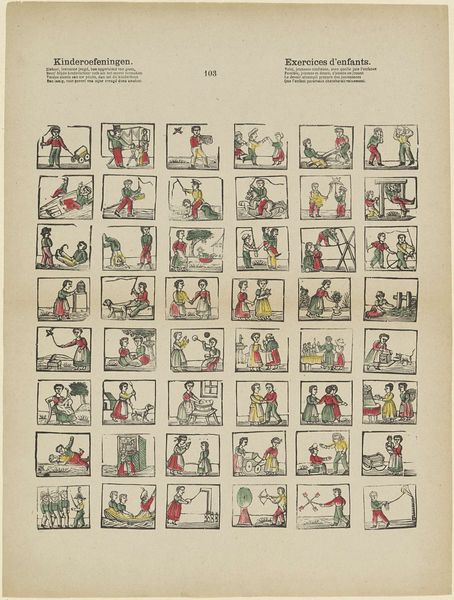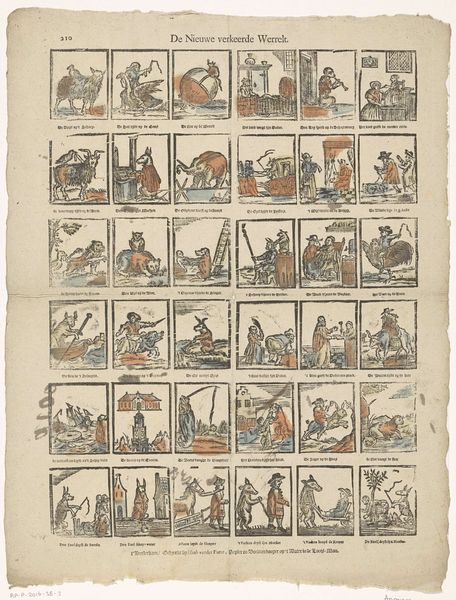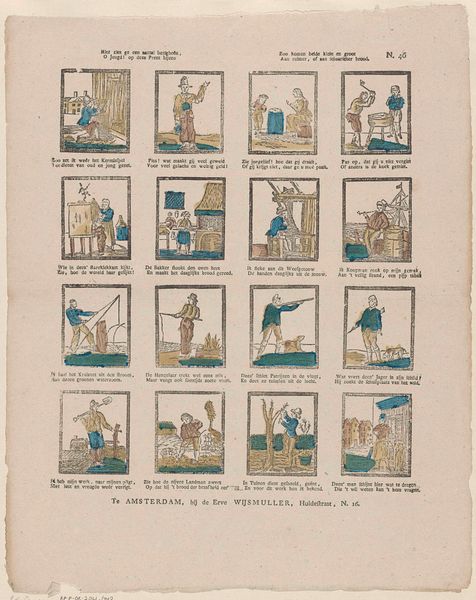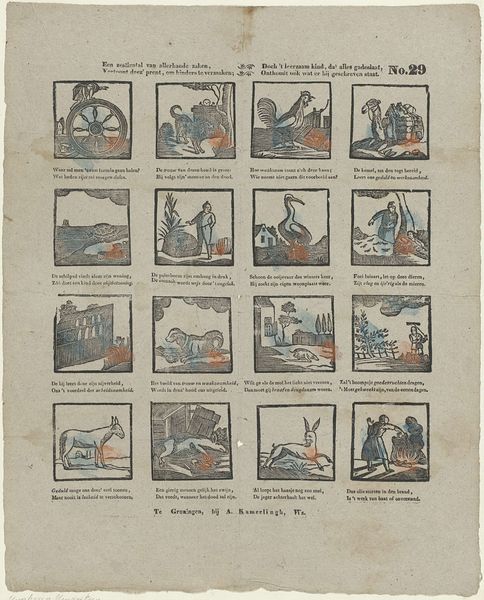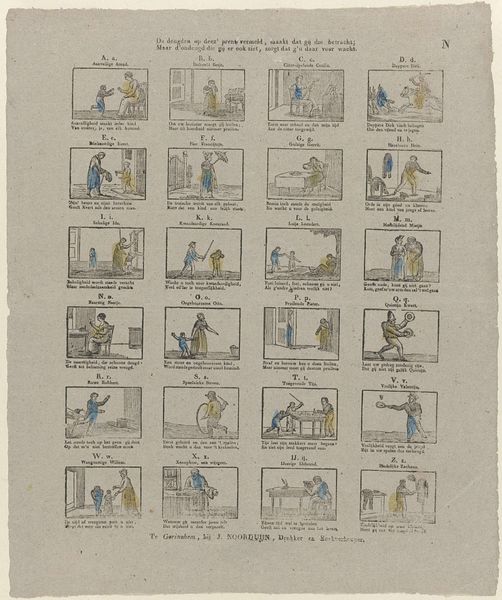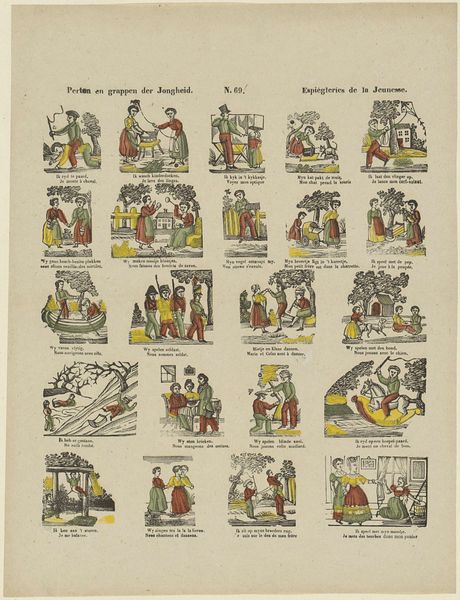
graphic-art, print
#
graphic-art
#
comic strip sketch
#
narrative-art
#
comic strip
# print
#
folk-art
#
comic
Dimensions: height 383 mm, width 325 mm
Copyright: Rijks Museum: Open Domain
Editor: Here we have "De verkeerde wereld" - "The Topsy Turvy World" - a print from somewhere between 1827 and 1894, currently held at the Rijksmuseum. It's a series of little vignettes, almost like a comic strip, depicting scenes that are completely absurd. What do you see in this piece, and how does it fit into the context of its time? Curator: What I see is a fascinating commentary on social order through its deliberate disruption. Consider the context: the 19th century was a period of immense social change, and with that came anxiety. This "topsy-turvy world" visually presents a world where societal norms are inverted – the hunter becomes the hunted, children discipline adults, and so on. Isn’t it interesting how popular imagery reflects societal unease? Editor: It is, especially the way it uses humor. Some of these are genuinely funny. But was it just for entertainment? Curator: I doubt that was the only aim. While humor certainly played a role in disseminating this graphic work across different publics, it also served as a critical tool. Folk art like this has historically allowed ordinary people to critique power structures without directly confronting them. Do you think this indirect approach may have helped to shield it from outright suppression? Editor: That’s a good point. Subversion disguised as simple entertainment. So, the visual language itself is political? Curator: Exactly! The arrangement, the accessible imagery, even the use of a printed format made it widely consumable. This challenges traditional ideas of high art, doesn’t it? It raises questions about whose stories get told and how. Editor: It really does. I came in thinking it was just whimsical, but it’s so much more layered than that. Curator: Precisely! It shows the power of popular culture to engage in societal dialogue and influence perspectives. Considering our discussion, would you consider it entirely devoid of any didactic or moral imperative? Editor: Not at all, I realize now that “De verkeerde wereld” is like a mirror reflecting a funhouse version of 19th-century society. The artist makes viewers examine what norms they were willing to consider in the right light. Curator: Indeed!
Comments
No comments
Be the first to comment and join the conversation on the ultimate creative platform.
